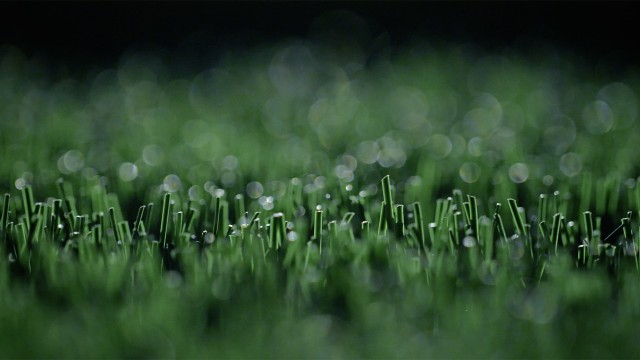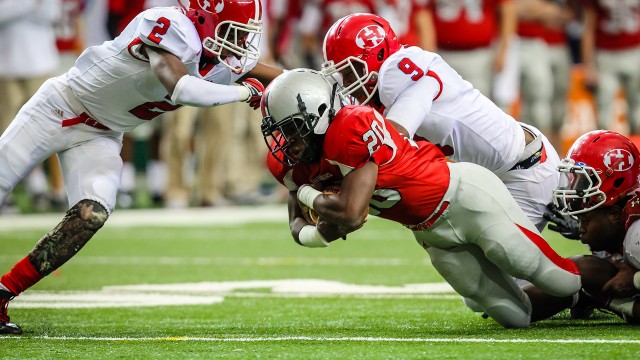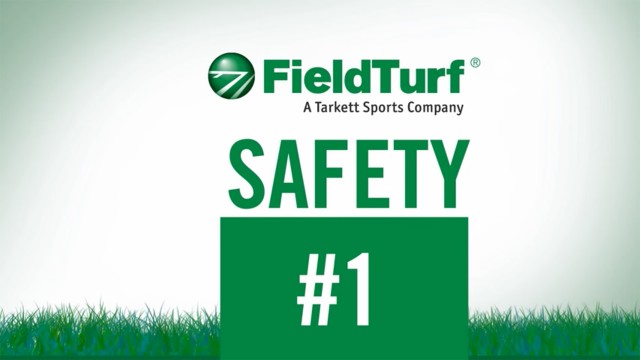Cualquiera puede afirmar que ofrece productos de césped seguros.
SIN EMBARGO, CUANDO SE TRATA DE SEGURIDAD ACREDITADA PARA LOS NIÑOS Y DEPORTISTAS, SOLO HAY UNA EMPRESA QUE DESTACA ENTRE EL RESTO: FIELDTURF.
No puede evitar las lesiones, pero puede limitarlas.
La seguridad de los atletas ha sido y será siempre nuestra primera prioridad. Cada día se llevan más lejos las fronteras de la investigación y la innovación en el diseño y la elaboración del sistema de césped artificial más avanzado de la industria. Sabemos que ningún deporte está exento del riesgo de lesiones, pero seguimos explorando nuevas maneras de reducir los riesgos y la seriedad de cualquier lesión. Nuestro enfoque en la seguridad nos ha llevado a generar numerosas mejoras e innovaciones en la reducción de posibles lesiones. Como resultado, ofrecemos el producto y la experiencia que proporcionan el terreno de juego más seguro posible para los deportistas. Algunos estudios independientes plurianuales validan nuestros esfuerzos de brindarle el campo más seguro, tanto a usted como a sus deportistas.
FÚTBOL UNIVERSITARIO
FIELDTURF FRENTE A CÉSPED NATURAL
Estudio de 3 años
Los sistemas de FieldTurf han conducido al:
- 13 % menos de distensiones musculares/desgarros
- 11 % menos de contusiones
- 31 % menos de desgarros de ligamentos
- 24 % menos de torceduras del tobillo superior
- 21 % menos de lesiones graves
- 23 % menos de lesiones en superficies de entre más de 4 y 8 años
Fútbol en el instituto
Fieldturf frente a césped natural
Estudio de 5 años
Los sistemas de FieldTurf han conducido al:
- 44 % menos de lesiones combinadas de golpes
- 43 % menos de lesiones combinadas de ligamento cruzado anterior
- 25 % menos de tiempo perdido por lesiones de largo plazo (más de 22 días de duración)
- 16 % menos de tiempo perdido por lesiones de corto plazo (entre 1 y 2 días de duración)
HIGH SCHOOL FOOTBALL
FIELDS WITH SHOCK PADS VS FIELDS WITHOUT
7-year study
Fields without pads led to:
- 53% less player-to-turf collision injuries
- 39% less shoulder girdle trauma
- 63% less lower leg injuries
- 73% less neck trauma
When are shock pads recommended?
There are some situations where a shock pad is highly recommend. When installing light-weight infill systems, common with alternative / natural infills like cork, coconut and/or olive, there isn’t enough material in the system to provide the necessary shock absorption. To meet the needed industry safety requirements, a shock pad is added under the system to provide the adequate performance.
HIGH SCHOOL FOOTBALL
heavyweight infill VS other infill weight surfaces
7-year study
Systems with >9 lbs per square foot of infill compared to all other infill weight surfaces led to:
- 19%-29% lower incidence of total injuries
- 35%-55% lower incidence of Substantial injuries
- 19%-26% lower incidence of severe injuries
- 32%-47% lower incidence of player-to-turf injuries
- 17%-22% lower incidence of Ligament Sprains and Tears
- 58%-63% lower incidence of injuries on surfaces aged 8+ years, vs systems with 0-5.9 lbs per square foot
NATIONAL FOOTBALL LEAGUE
FIELDTURF VS NATURAL GRASS & COMPETING SYSTEMS
4-year study
ACL Injury Rate per Team Games Played:
- .048 FieldTurf
- .050 Natural Grass
- .053 Competing Turf Systems
NATIONAL FOOTBALL LEAGUE
FIELDTURF VS NATURAL GRASS
7-year study
Achilles Tendon Injuries:
When analyzing the rates of achilles tendon tear while comparing ground surfaces (grass and artificial turf), we revealed no significant difference in tear rates.
COLLEGE men's soccer
FIELDTURF VS NATURAL GRASS
6-year study
FieldTurf systems led to:
- 25% Fewer Total Injuries
- 20% Fewer Severe Injuries
- 33% Fewer Concussions
- 15% Fewer Injuries due to player-to-surface collisions
COLLEGE women's soccer
FIELDTURF VS NATURAL GRASS
5-year study
FieldTurf systems led to:
- 11% Fewer Total Injuries
- 33% Fewer Severe Injuries
- 57% Fewer Injuries on Surfaces 8+ years old
- 17% Fewer Injuries in Rain-Field Conditions
United Soccer League, League 1
Artificial Turf vs Grass
Three Seasons - 2020-2022
Study concluded: Overall, the incidence of injuries per athlete exposure was significantly lower on artificial turf than natural grass. Injuries subdivided into location demonstrate statistically lower rates of head/neck, upper limb, and lower limb injuries on artificial turf. Additionally, with regards to type of injury, the rate of contusions and central/peripheral nervous system injuries were statistically lower on artificial turf.
Amateur Soccer
Artificial Turf vs Grass
Skin Abrasions Due to Sliding on Playing Surface
Study concluded: No evidence of more skin related traumatic injuries when a slide was performed on artificial turf compared to natural grass.
Fútbol MLS
Césped artificial frente a césped
Estudio de 4 años
Resultados del estudio: La tasa general de lesiones en césped artificial era “no inferior” o igual en césped natural.
College Men's & Women's Soccer
Artificial Turf VS Natural Grass
10-year study
Study concluded: NCAA soccer players who practice on natural grass have increased risk of ACL injury (8.67 times more likely) compared with the risk of those practicing on an artificial surface, regardless of sex or NCAA division of play. No difference in risk of ACL injury between playing surfaces was detected during matches.
Effects of Playing Surface on Physical, Physiological and Perceptual Responses
artificial vs grass
Study concluded:
- An improved physical performance on artificial turf compared to natural grass.
- Performance tasks incorporating greater reliance on agility and change of direction ability are more likely to be enhanced on artificial turf compared to natural grass.
- The improved physical performance on artificial turf was accompanied by improved perceptual and some blood biochemistry (Lac, Neu and LYM) responses.
Italian Major League - Soccer
Artificial Turf vs Grass
One Season of Division I Play
Study concluded: No difference in injury risk on natural grass and artificial turf in elite professional soccer athletes.



